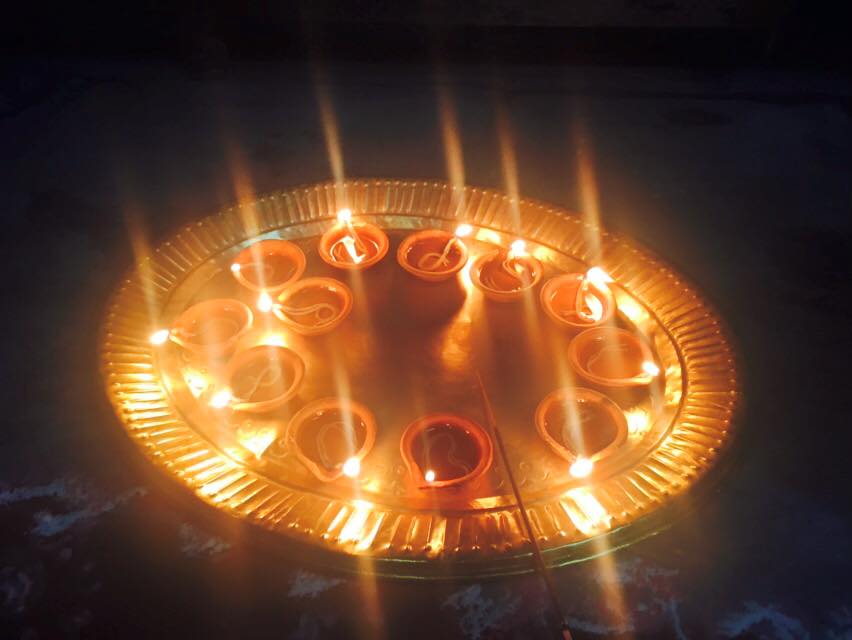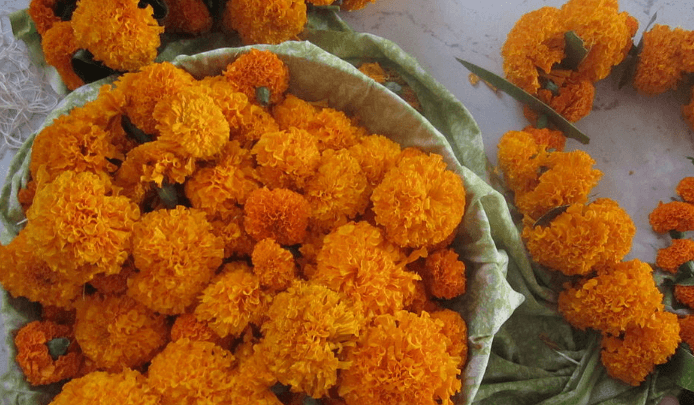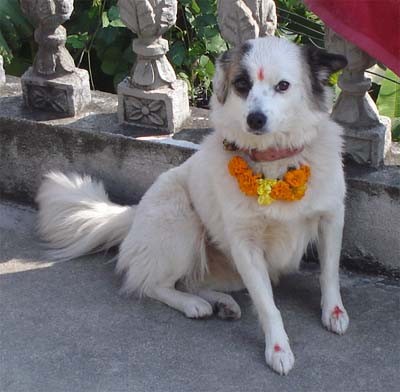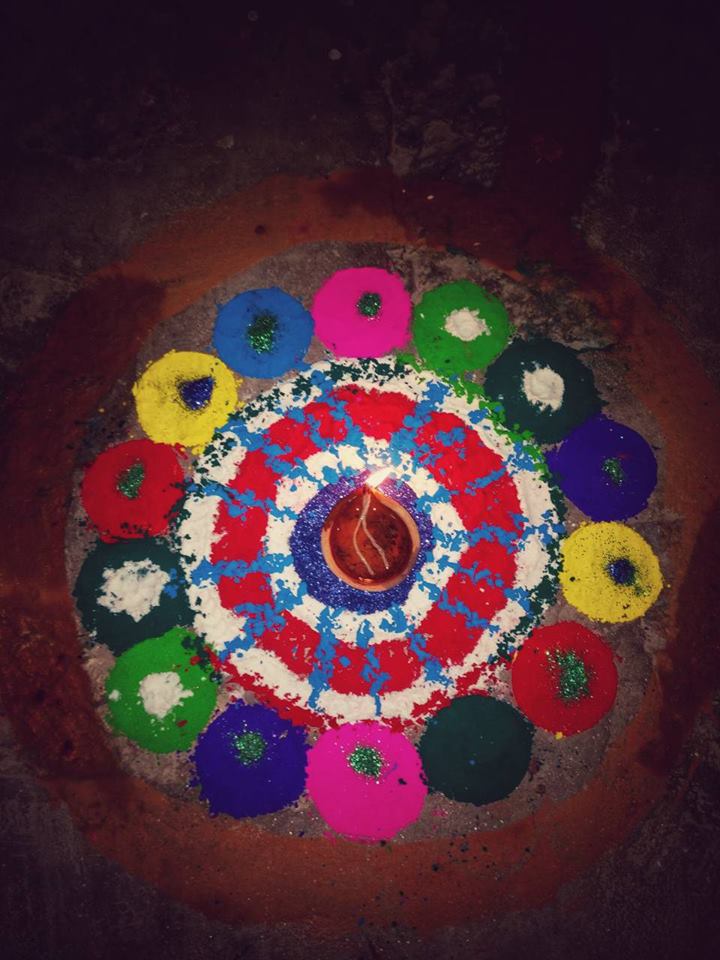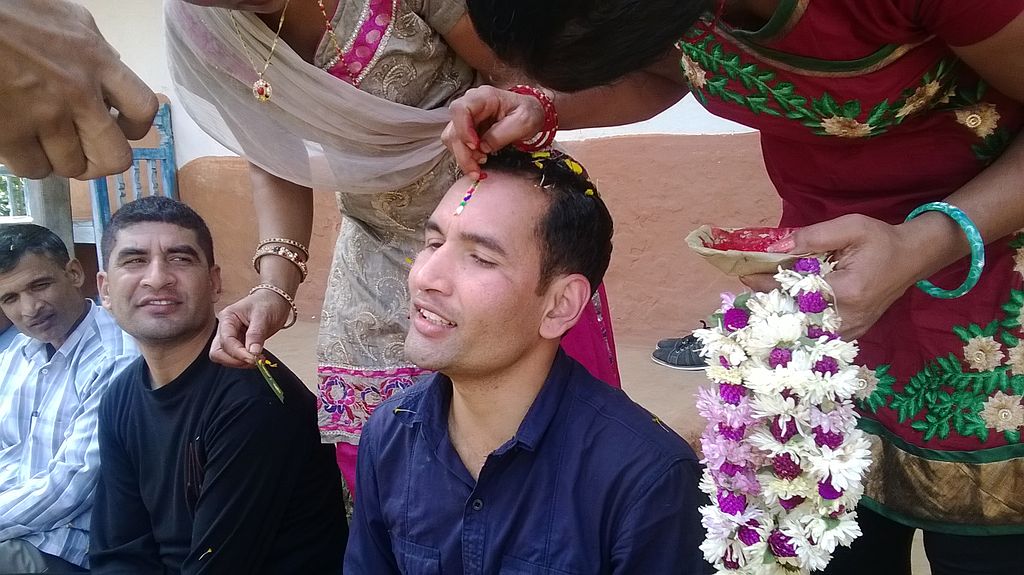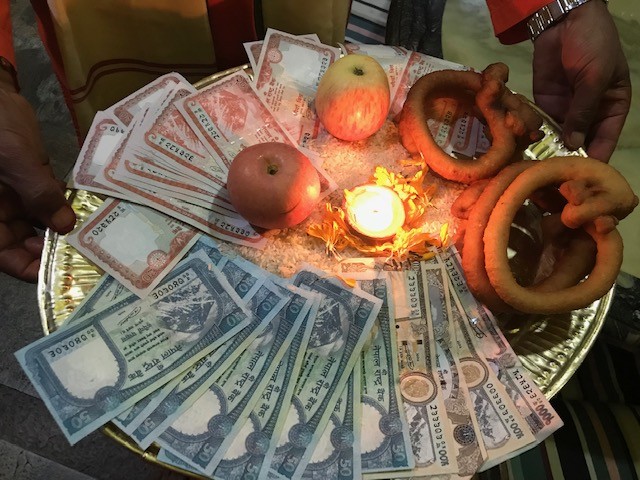Tihar; also known as Deepawali or Yama Panchak is a main part of Nepalese culture that signifies happiness, luck, and harmony among all the people and is considered the second-biggest festivals in Nepal after Dashain. This festival is celebrated countrywide by Nepalese people, irrespective of their caste and creed. Amid this celebration people respect and worship crows, dogs, cows, Laxmi; the goddess of wealth and luck, brother, Gobardhan, and reverence of one’s body or self (also known as Mha Puja).
Tihar is also known as the “Festival of Lights and Flowers”, as the entire nation is decorated with vibrant flowers and used immensely to adorn houses and offices. Additionally, the colourful flowers that blossom in every house’s garden embellish the entire surroundings. People also lit candles, electric lights, and oil lamps inside and outside houses throughout the festivals to make it illuminate at night and welcome Goddess Laxmi.
When is Tihar celebrated?
Tihar generally falls in either October or November (Kartik Nepali month). However, the date of observing the festival depends upon the cycle of the moon. Tihar is a five-day-long festival that starts with Kaag Tihar (the worshipping of the crow) in Trayodashi of Kartik Krishna Paksha and ends with Bhai Tika in Dwitiya of Kartik Sukla Paksha. According to the western calendar, the festival occurs in October or November. This year, the festival occurs from 5th – 9th November 2018. Likewise, the festival will be celebrated from 25th – 29th October 2019.
Legends behind Tihar Festival
Many stories prevail about the celebration of the festival. One of the popular stories is associated with Yama; the “God of death” and his sister Yamuna. According to the myth, Yama used to be very busy with his work that he stayed away from his sister for a long time. Yamuna desired to meet her brother Yama Raj, so she took the help of various animals like a crow, dog, and cow as a messenger to call her brother to meet her. But Yama didn’t come to see his sister Yamuna. Finally, she herself went to visit her brother. After meeting him, Yamuna worshipped Yama with five coloured tika and offered him with garland of Globe Amaranth flower (Makhamali in Nepali) and a special gift prepared by her. Yamuna made a circle with Dubo (Cynodon dactylon) dipped in mustard oil. Yamaraj being pleased by the love of his sister then announced that someone who receives tika from their sisters will not die on that day.
Another famous story suggests that there was once a girl named Yamuna whose brother was ill and prayed for his long and healthy life. One day, when the Yama visited to take her brother with him, she was performing a Puja for her brother. Yamuna convinced Yama to be a part of the Puja and performed the ceremony with both. Yama was pleased with her and asked her to wish for anything she wants. Yamuna then asked for a long and healthy life for her brother. Since then, Tihar is celebrated as a special occasion to pray for the long and prosperous life of the brothers.
Know More About the Colorful Festival of Nepal
The Five Days of Tihar Festival
Each day of the Tihar festival holds its own importance and significance behind the celebration. Here are the five days of the festival and the events occurring on the respective days:
Day 01: Kaag Tihar- Worshipping the Crow
The Hindus regard the crow as the messenger of the Yamaraj: the god of death, and thus worship it on the first day of the festival to bring good luck to their houses. The people worship the crow and offer them food, rice, and sweets in the morning. They also believe that the caw-caw sound of the crow is a sign of the sadness of the crow that brings bad luck. Thus, on this day, people please the crow by feeding them to prevent it from bad happening and wish to bring them good luck.
Day 02: Kukur Tihar- Worshipping the Dog
On the second day, people worship the most loyal animal to humankind: the dog. The day is a chance to express gratitude towards dogs for safeguarding our homes and lives. Generally, male dogs are worshipped and are put on with a red tika on their forehead and a beautiful garland around their neck. The people also treated delicious food to dogs. Almost every dog on the street is found with a tika and a garland. The dogs are also regarded as “the gatekeeper of death” and believed that they can predict the dangers in the future days. The dog is also the steed of the fearful Bhairab, the god of destruction.
Thus worshipping the dogs on this day helps to prevent the dangers in the year to come. The Nepalese policemen also offer beautiful garlands to the patrol dogs to express their contribution to national security.
Day 03: Gai (Cow) Tihar/ Laxmi Puja- Worshipping the Goddess of Wealth
People worship the cow on the morning of the third day. The cow is a holy animal in Hindu mythology and is considered as goddess Laxmi. The cow is of huge benefit to people in the past. Milk, dung, and urine are used for purification in various rituals. The cow is also considered a mother since we fed upon the milk since our childhood. Thus, on this day the cow is offered tika, garland, and delicious foods as an indication of thankfulness.
The following afternoon is all busy with cleaning and decorating the houses. The houses are painted with Red mud and cow dung. Colorful rangolis are made of various designs on the main gateway of the house and lit a candle or a Diyo at the center. Small footprints are made from the mixture of flour and colour that are painted from the rangolis in the Puja room. These footprints are believed to guide the goddess Laxmi inside the house.
The evening is more special, for it particularly involves the worshipping of the Goddess of wealth: Goddess Laxmi. Along with the Goddess, the people also worship money and other various properties. The people request the Goddess to come into their house and bless them with wealth and prosperity in life. While the elder people are busy worshipping the Goddess in the evening, the children visit their neighbors singing Deusi and Bhailo songs.
Day 04: Govardhan Puja and Mha Puja
The fourth day celebrates three different kinds of Puja. The first one is Goru Puja, which is the worship of Oxen. Likewise, Govardhan Puja is performed by making a hill of Govardhan Parbat by using cow dung.
At night, especially the Newar community performs Mha Puja. The Mha Puja is the ritual of celebrating own existence and understanding own value. The members of the family sit in a row and make a mandap for each of them which is decorated with flowers, sweets, garland, and lights. The female member of the family offers the other members of the family Sagun which consists of fried eggs, sweets, lentils, and local wine made from rice.
Day 05: Bhai Tika
The last day of the Tihar is Bhai Tika and is the most auspicious day of the festival. Bhai Tika is a reflection of the love and the bond between brothers and sisters. The tika is believed to strengthen their love and make the bond stronger.
On this day, brothers and sisters come together to celebrate their love and bonding. Sisters apply seven different colors on the forehead of brothers, draped with garlands made from Sayapatri (Marigold) and Makhamali flowers around their neck, and serve them with various sweets and dishes. They encircle their brothers with mustard oil so that Yama; the god of death cannot reach them, and thus they will live a long life. The sisters pray for the long and prosperous life of their brothers. The brothers also put the Tika on their sister’s forehead, bow their heads and make a promise to protect her till the end of life, and surprise their sisters with special gifts and money.
Traditions during the Tihar Festival
The festival of Tihar is a matter of great fun for the Nepalese people. There are various traditions that are associated with the celebration of the festival, which includes:
Lights
Lights are the most important part of the festival. Along with cleanliness, each house is beautifully decorated with various coloured electric lights. The hand-woven oil lights (Diyo) and candles are lit and put on the entry points, and the windows of the houses. As dusk approaches, the entire country seems to be floating on the ocean of lights.
Deusi Bhailo programs
During this festival, young people and children gather in groups and visit door to door singing melodious songs like Deusi and Bhailo. They sing and dance to different cultural and modern songs. The groups are offered various items like fruits, sweets, Rotis, money, and flowers. The Deusi Bhailo groups in return give a blessing to the house that the goddess Laxmi will reside in the house and pray for the prosperity of the householder.
Interested In the Various Traditions of Tihar Festival?
Homemade dishes
Tihar is also famous for the number of dishes prepared during the occasion. Varieties of Rotis are prepared in almost every house which includes Sel Roti, Anarasha, Fini, Chini Roti, and many more. Particularly famous is the Sel Roti made by cooking a mixture of rice flour, ghee, sugar, milk, and many other ingredients. The mixture is poured into the hot oil by hand in a circular shape and cooked until it turns golden on both sides.
Firecrackers
The firecrackers are also a major part of Tihar celebration. The sounds of the firecrackers from near and far are heard. Everyone from a child to an adult seems to enjoy playing with the firecrackers.
Playing cards
Playing cards is one of the favourite parts of the festival. Families and friends gather around and enjoy playing cards. Gambling is banned in the country. However, people can have a quality and fun time with family by playing cards.
With ecstasy and full of delight, the most colourful and dazzling festival comes to an end after these five glorious days.

